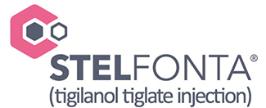
About mast cell tumors
Mast cell tumors are the most common cutaneous tumors in dogsWithrow, S.J. and Vail, D.M. Small Animal Clinical Oncology, Elsevier Inc, Canada 402-421, 2007.Welle MM, et al. Veterinary Dermatology 2008;19:321–339.McNeil EA, et al. Veterinary and Comparative Oncology 2006;4:2–28.Murphy S, et al. Veterinary Record. 2006;158(9):287–291.
Mast Cell Tumors (MCTs) are a cancer of mast cells. Mast cells arise in the bone marrow, travelling to sites to mediate an inflammatory response by releasing granules of histamine and heparin. It is not known exactly why mast cells form MCTs, but it happens often enough for this to be the most common form of cutaneous cancer in dogs.
Primarily a disease of older dogsGarrett L. Veterinary Medicine Research and Reports 2014;5:49-58.
Up to 2 out of 10 cutaneous cancers are MCTsWithrow, S.J. and Vail, D.M. Small Animal Clinical Oncology, Elsevier Inc, Canada 402-421, 2007.Garrett L. Veterinary Medicine Research and Reports 2014;5:49-58.
The age when incidence of MCTs is highest – although they can develop at any ageSmiech A, et al. Journal of Veterinary Research 2019;63:141–48.
Some breeds are more likely to develop MCTs than others:Smiech A, et al. Journal of Veterinary Research 2019;63:141–48.
- Shar-Peis
- Boxers
- American Staffordshire Terriers
- Labrador Retrievers
- French Bulldogs
- Golden Retrievers
Yet, many dogs are not good candidates for surgery because of multiple factors
Factors that can make surgery less suitable:
- LocationLowe R, et al. Veterinary and Comparative Oncology 2017;15(3):775–84.
-
- Cosmetic and/or functional compromise
- Ability to close the wound
- PathologyKiupel M and Camus M, Veterinary Clinics: Small Animal Practice 2019;49:819–36.
-
- Edema, reactive stromal cells and inflammatory cells make determination of the surgical margins difficult
- Size of the tumorMonteiro B, et al. Canadian Veterinary Journal 2001;52:1209-1214.
-
- 1.4% increase in incomplete excision per cm3
- Body weightMonteiro B, et al. Canadian Veterinary Journal 2001;52:1209-1214.
-
- Decreased body weight is a risk factor for incomplete excision
- General anesthesiaBrodbelt D, Veterinary Journal 2009;182(2):152–61.
-
- Older dogs with comorbidities have higher anesthetic risk
- Some breeds (brachycephalic) have higher anesthetic risk
- Client choice and preference
-
- Preference to avoid surgery and surgical aftercare
Indications
STELFONTA® (tigilanol tiglate injection) is a prescription treatment approved by the FDA and indicated for:
- non-metastatic subcutaneous mast cell tumors located at or distal to the elbow or the hock in dogs
- non-metastatic cutaneous mast cell tumors
Tumors must be less than or equal to 10 cm3 in volume, and must be accessible to intratumoral injection.
IMPORTANT SAFETY INFORMATION
Accidental self-injection of STELFONTA® may cause severe wound formation. To decrease the risk of accidental self-injection, sedation of the dog may be necessary. In dogs, do not inject STELFONTA into subcutaneous mast cell tumors located above the elbow or hock. Formation of wounds, possibly extensive, is an intended and likely response to treatment with STELFONTA along with associated swelling, bruising and pain; these wounds are expected to heal. Appropriate pre- and post-treatment medications must be given, including a corticosteroid plus blocking agents for both H1 and H2 receptors, in order to decrease the potential for severe systemic adverse reactions, including death, from mast cell degranulation. For full prescribing information, contact VIRBAC at 1-800-338-3659 or view the Product Insert.

